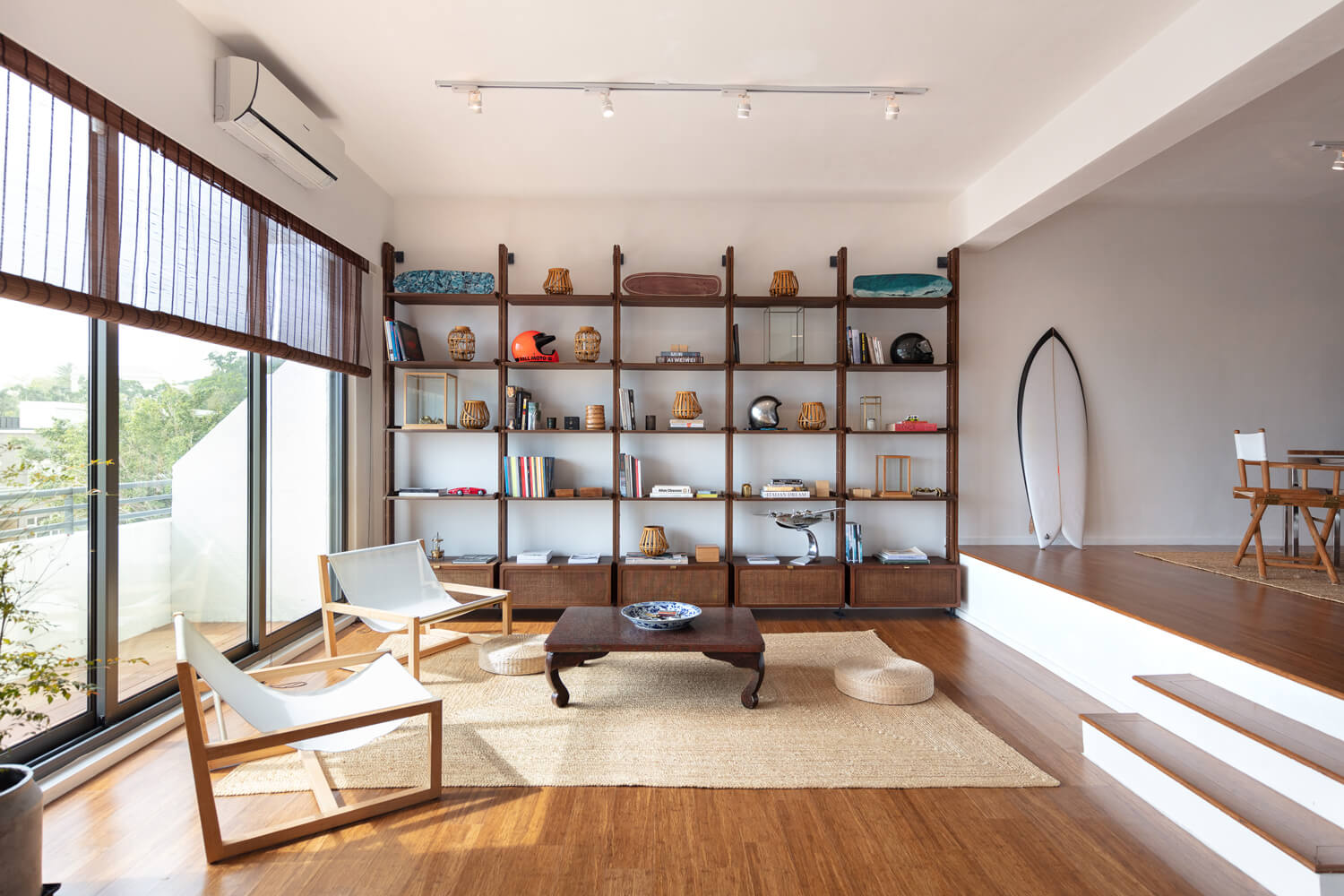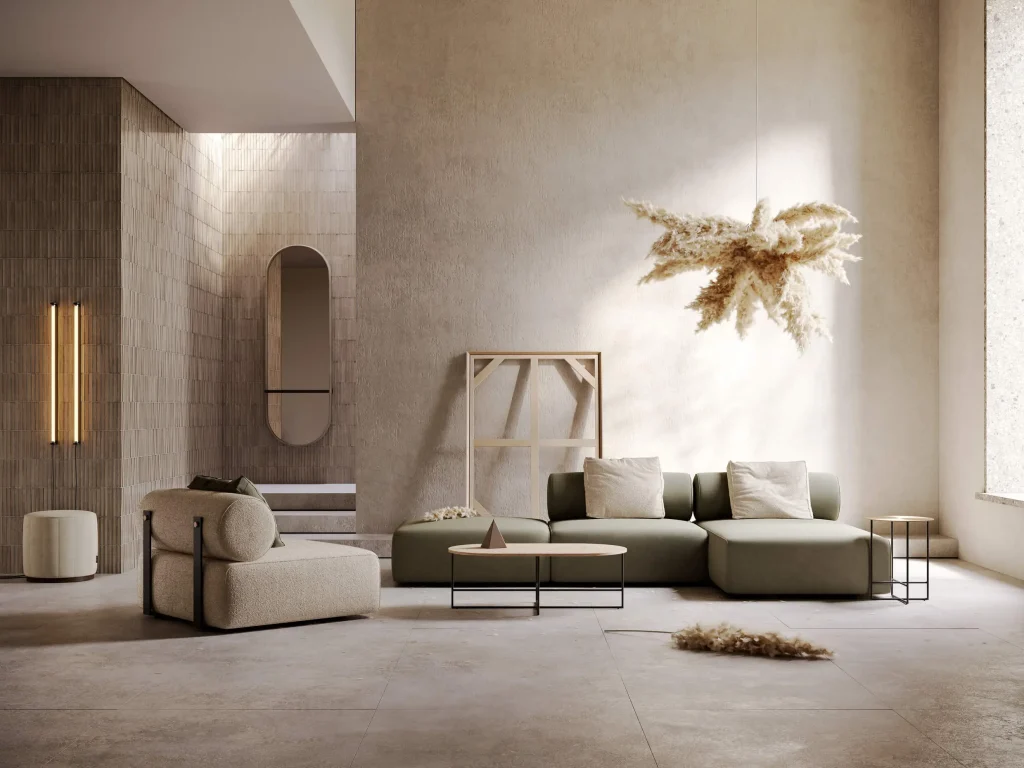What is Japandi Style? The Best of Both Worlds
As the world gets more and more chaotic, the design trends that interest us the most are the ones that promise serenity and order. Japandi, a stylish mix of Japanese minimalism and Scandinavian “hygge,” is one of the few that has done this well.
Japandi is not simply a style; it’s a way of life. It combines the basic ideas of Japanese style, such simplicity, clean lines, and a profound appreciation for craftsmanship, with the cosy, useful warmth of Scandinavian decor. The ultimate effect is an environment that is both very elegant and quite comfortable, a wonderful mix of style and function. This style goes against the “more is more” way of thinking by encouraging people to live mindfully and with purpose in a carefully chosen space.
Two Philosophies: Japanese Minimalism and Scandinavian Hygge
You need to comprehend the two genres that make up Japandi before you can really get it.
The ancient Zen idea of finding beauty in things that aren’t flawless, don’t last, and are part of nature is what Japanese Minimalism is based on. This style is based on ideas like wabi-sabi (finding beauty in things that are not perfect or whole) and ma (the graceful use of negative space). Japanese design is all about clean lines, wide spaces, and a lot of respect for natural materials like paper, bamboo, and wood. The colours are usually muted and earthy, with brown, grey, and black being the most common. Low furniture makes the room feel quiet and grounded, which makes people want to think and connect with their environment. The focus is on quality over quantity, with each item in a room having a clear purpose and being picked for its natural beauty and craftsmanship.
The Danish word hygge, which means “a feeling of contentment and cosiness,” is what Scandinavian Design is all about. Scandinavian decor puts comfort, warmth, and light at the top of its list of priorities. Functionality is the most important thing, thus the focus is on furniture that is useful and well-made that makes daily life easier. There are a lot of whites, light greys, and pastels in the colour scheme, which makes the room feel bright and airy. Using natural materials, especially light woods like birch and ash, brings the outside in. Soft textiles like wool, faux fur, and chunky knits give cosiness. The entire mood is one of happy simplicity, a place to meet up and relax.

A fusion of Japanese and Scandinavian aesthetics source:pinterest.com
How the Japandi Fusion Styles Come Together
Japanese and Scandinavian design may look different at first, but they both have a deep regard for simplicity, usefulness, and natural materials. Japandi does well in this area of common ground. Mixing two styles isn’t just about putting them together; it’s about bringing out their common values to make something new and beautiful.
Japandi homes combine the simple, clean lines and unadorned beauty of Japanese style with the warm, cosy textures of Scandinavian design. The end effect is a room that is less bare than a Japanese interior that is only minimalist and more polished than a Scandinavian design that is only rustic. It’s the right mix of comfort and austerity.

source:pinterest.com
The Main Parts of Japandi Style
To get this look in your home, pay attention to these important details:
A Colour Palette That Is Soft and Natural: Don’t use bright, bold colours. The Japandi colour scheme is based on neutral, earthy colours. The Scandinavian side has warm greys, soft beiges, and off-whites, while the Japanese side has deep, moody colours like black, charcoal, and warm browns. This makes the rest of your design look calm and put together.
 image credit: JapandiStore
image credit: JapandiStore
Natural Materials: This is perhaps the most significant part. Both approaches show how beautiful nature is. Raw, real materials are very important in Japandi. Use lighter woods from the Scandinavian side, such oak or ash, and darker woods from the Japanese side, like walnut or bamboo. Linen, wool, cotton, pottery, paper, and stone are some of the other materials. The idea is to make a space that feels real and connected to nature by using natural materials and textures.

Image credit: House Designer
Functional and Beautiful Furniture: Pick furniture that looks well and works well. Japandi style doesn’t like clutter, thus every piece of furniture should have a need. Look for things that have simple shapes and straight lines. The Japanese place a lot of importance on being near to the floor, and this is reflected in the low furniture, especially in living and dining spaces.

Image credit: House Designer
The Art of Getting Rid of Things: Japandi places are naturally clean. You need to think like a minimalist to get this style. Look through your things and only keep what you really need or what makes you happy. It’s not about throwing away everything you own; it’s about being careful with what you do own and making space and quiet. The saying is “less is more.”

Image credit: House Designer
Focus on lighting: Both styles depend a lot on natural light. Don’t hang heavy curtains over your windows so that as much light can come in as possible. Choose lights that give out a pleasant, warm glow for artificial lighting. Simple pendant lights, paper lanterns, and floor lamps with clean lines are all good ways to make a space feel warm and welcoming.

Image credit: House Designer
Simple, curated decor: The space itself is the key design element, thus decorations should be few and carefully chosen. Every item should have a story or a use. Think of getting a few pieces of handmade pottery, a solitary plant, or a carefully picked piece of art. People love things that aren’t perfect, so enjoy the beauty of a porcelain bowl that isn’t quite round or a piece of fabric with a rough, natural feel.

Interior Design: www.aworkofsubstance.com / Photography: Dennis Lo
In Conclusion, A Life of Peace and Purpose
Japandi style isn’t just a passing fad; it’s a way of thinking about design that inspires people to live more mindfully. It teaches us to discover happiness in simple things, appreciate the beauty of natural materials, and make places that promote peace and health. Japandi is a style that combines the warmth of hygge with the deep beauty of Japanese minimalism. It shows you how to make a house that is not only beautiful to look at but also good for your spirit. It’s a place where you may get away from the commotion of the outside world and reconnect with what really matters: a life of peace, purpose, and balance.
For more content like this CLICK HERE!
Where to read more:





